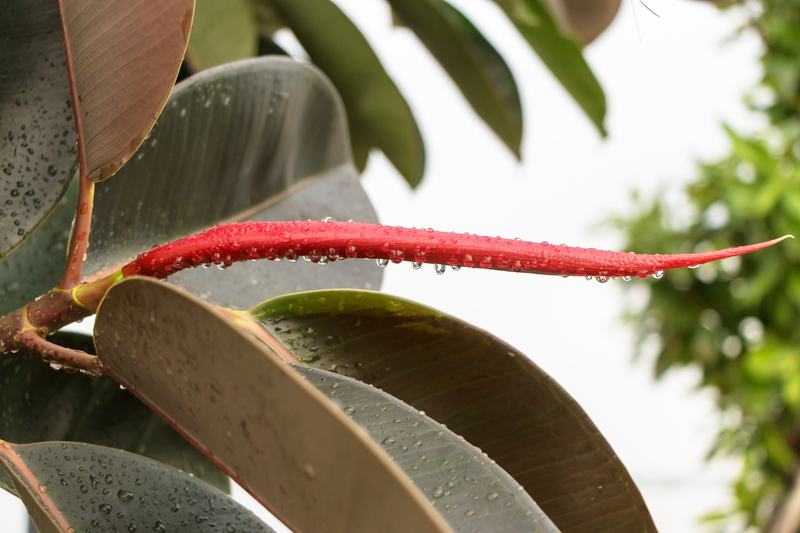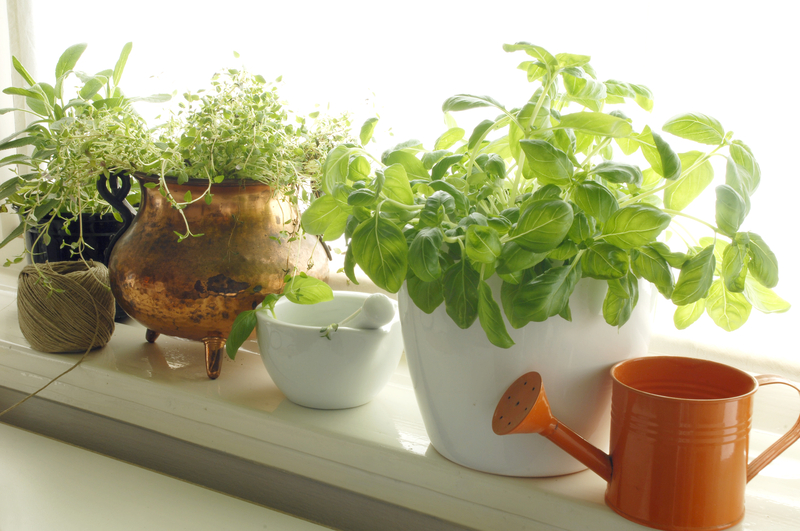Unlocking the Mysteries of Orchid Maintenance
Posted on 24/05/2025
Unlocking the Mysteries of Orchid Maintenance: A Comprehensive Guide
Orchids, with their exquisite beauty and captivating variety, have enchanted plant lovers for centuries. But for many, proper orchid maintenance remains a mystery cloaked in myth and uncertainty. If you've ever wondered why your elegant phalaenopsis won't rebloom, or struggled with dropping buds on your stunning cattleya, you're not alone. This in-depth guide endeavors to unlock the secrets of orchid care and transform even the novice grower into a confident orchid guardian.

Understanding Orchids: Nature's Delicate Marvels
Orchids belong to one of the world's largest and most varied plant families, boasting over 25,000 species and 100,000 hybrids. Their diversity is matched only by the exotic splendor of their blooms, which range from the frothy white moth orchid (Phalaenopsis) to the bold and dramatic Cymbidium.
Why Orchid Care Differs From Other Houseplants
Unlike your average pothos or aloe vera, most orchids are epiphytes--they grow on trees, not in soil. This unique trait dramatically affects their moisture requirements and root health. As epiphytes, they've adapted to:
- Lightweight, breathable root environments
- Frequent air exchange at the root level
- Intervals of dryness between waterings
Understanding this natural biology is the first step to mastering orchid plant care.
Essential Elements of Successful Orchid Maintenance
Lighting: Giving Orchids the Sunshine They Crave
Light is the lifeblood of any orchid, but they can be surprisingly sensitive to its intensity. The trick? Bright but indirect light is almost always key.
- Phalaenopsis (Moth Orchids): Prefer medium to bright indirect sunlight. North or east windows are ideal.
- Cattleya and Vanda: Need brighter light, such as a south or west window, diffused by a sheer curtain.
- Dendrobium: Thrive in strong indirect light, making sunrooms perfect.
Signs of incorrect lighting:
- Leaves turning yellow or developing red spots: Light is too intense.
- Dark green leaves and no blooms: Not enough light.
Keep in mind that artificial grow lights can supplement natural light, especially in winter or in low-light rooms. Just remember to give the plants a natural day-night cycle.
Watering Wisdom: The Most Crucial Aspect of Orchid Maintenance
Overwatering is the most frequent (and fatal) error in orchid keeping. Because orchid roots demand air as much as water, they should never sit in soggy media. Here's how to get it right:
- Water only when the potting mix is nearly dry. Stick your finger in the media up to the first knuckle--if it feels dry, it's time to water.
- Always water early in the day, ensuring any residual moisture evaporates by nightfall.
- Use tepid, distilled or rainwater if possible; softened tap water often contains salts that can harm roots.
- Let water drain freely; never leave pots sitting in water.
Pro Tip: A weekly schedule works for most indoor orchids, but less frequent watering may suit cooler or less humid environments.
Humidity: Mimicking the Tropics
Native to humid jungles, most orchids love moisture in the air. Aim for a humidity level of around 40-70%. For optimal orchid maintenance, try these strategies:
- Place pots on trays filled with pebbles and water (ensuring pot bases aren't submerged).
- Use a room humidifier, especially during dry winter months.
- Mist orchids daily with a fine spray (morning is best).
Potting Tips: The Right Medium Makes All the Difference
Forget traditional potting soil! Orchids thrive in porous, chunky mixes that mimic their natural, airy tree-branch homes. Common potting media include:
- Bark chips: The most popular orchid mix, offering excellent drainage.
- Sphagnum moss: Retains moisture, ideal for drier homes or for young orchids.
- Coconut husk or charcoal: Often mixed in to improve airflow and stability.
Repotting should happen every 1-2 years, or when you notice media breaking down or roots crowding the pot. Choose pots with drainage holes and avoid overly large containers--orchids like their roots to be a bit snug.
Feeding and Fertilizing: Fueling Those Gorgeous Blooms
Orchid nutrition is another misunderstood area of orchid plant maintenance. Here's the simple truth:
- Use a balanced, water-soluble fertilizer (20-20-20 or specifically formulated for orchids).
- Fertilize "weakly, weekly"--dilute the fertilizer to one-quarter the recommended strength and feed once a week during growth periods.
- Skip feeding when the orchid is resting after blooming.
- Flush the pot with plain water monthly to remove salt buildup.
Over-fertilization can be just as harmful as neglect, so always err on the side of caution.
Common Orchid Maintenance Challenges--and How to Conquer Them
1. Wilting or Wrinkled Leaves
Drooping, limp, or wrinkly leaves usually indicate a watering issue. Underwatering causes dehydration, while overwatering leads to root rot--both doom the leaves. Unpot and examine the roots if symptoms persist.
2. No Blooms or Stubborn Flower Spikes
An unwillingness to rebloom is most often due to insufficient light or improper temperature. Many orchids (especially Phalaenopsis) require a drop in nighttime temperatures to trigger blooming. Try moving your orchid to a cooler spot during autumn--ideally a window with cool night air.
3. Leaf Spots, Mold, and Pests
- Brown leaf spots or mushiness: Usually fungal. Allow media to dry between waterings, improve air circulation, and remove affected leaves.
- Sticky residue or white webbing: Mealybugs or spider mites. Wipe leaves with a mild insecticidal soap or rubbing alcohol.
- Yellowing leaves: May indicate a nutrition or watering balance issue.
Regularly inspect your orchids for early signs of trouble, and always isolate new plants for 2-3 weeks before introducing them to your collection.
Advanced Orchid Maintenance: Cultivating Rare and Demanding Species
For those ready to advance from basic orchid care, some rare or "difficult" species offer new challenges and immense satisfaction. Varieties like Miltoniopsis (pansy orchids), Odontoglossum, or Masdevallia often require:
- Cooler temperatures (50-70?F is optimum)
- Constant, high humidity (60-80%)
- Frequent, light waterings and top-quality water (reverse osmosis or rainwater recommended)
- Strict pest and disease prevention--these orchids are less forgiving
Only attempt these species once you have mastered commonly sold orchids such as Phalaenopsis, Cattleya, or Dendrobium.
Orchids in Home Decor: Display and Enjoyment
Beyond the challenge of orchid maintenance, these plants offer stunning decorative potential. Here's how to highlight their beauty in your home:
- Place orchids on windowsills with filtered sunlight for a living work of art.
- Use transparent pots to showcase root growth--an impressive and educational sight.
- Combine several orchids in a decorative tray or terrarium (with ample ventilation) for dramatic effect.
- Add companion plants like ferns or moss for a lush, jungle-like display.
With the right care, orchids can become lasting, ever-changing focal points in any room.
Year-Round Orchid Maintenance Checklist
- Spring: Repot if needed; resume feeding; increase light and humidity as growth resumes.
- Summer: Water and mist more frequently; protect from harsh sunlight.
- Autumn: Reduce feeding; ensure temperature drops for blooming; clean leaves and check for pests.
- Winter: Decrease watering; maximize available light; avoid cold drafts; rest period for many orchids.
Myth-Busting: Common Orchid Maintenance Myths Exposed
- Myth: Orchids are very difficult and for experts only.
Reality: Many modern hybrids are remarkably hardy and suitable for beginners. - Myth: Orchids should be watered with an ice cube.
Reality: Never use ice; it can damage tropical roots. Tepid water is best. - Myth: Orchids should only be repotted when in bloom.
Reality: Repot after blooms fade, when new roots are forming.

The Joys of Mastering Orchid Maintenance
Unlocking the mysteries of orchid care rewards plant lovers with dazzling blossoms and extraordinary satisfaction. With the right balance of light, water, humidity, and nutrition, anyone can maintain thriving, reblooming orchids at home. Remember, each variety has its own needs, so reading labels and researching your specific orchid is vital.
So, why not pick up that exotic orchid you've always admired? With patience and these science-backed techniques for orchid maintenance, you too can experience the ongoing wonder of these mystical blooms. Happy growing!
Frequently Asked Questions About Orchid Maintenance
- How often should I water an indoor orchid?
Usually once a week, but always check the medium's dryness before watering. - Can I grow orchids in the bathroom?
Absolutely! Steamy bathrooms often have ideal humidity and safe indirect light. - Why are my orchid's leaves turning yellow?
Most often due to overwatering, lack of light, or natural aging of lower leaves. - Is it okay to cut an orchid's flower spike after blooming?
On some species (like Phalaenopsis), cutting just above a node can prompt new blooms. On others, remove the spike entirely.
Your Path to Orchid Mastery Starts Here
Armed with the right information and a spirit of gentle curiosity, you can bring the secrets of successful orchid maintenance into your own home. Stay observant, be patient, and above all--enjoy the breathtaking rewards as your orchids thrive and bloom!

